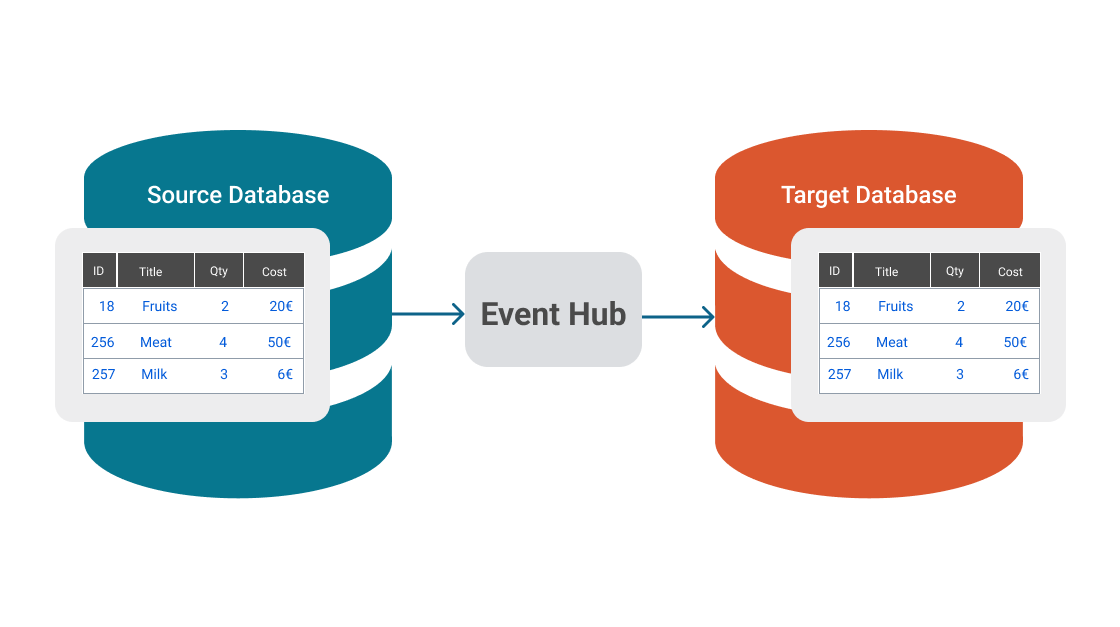Change Data Capture vs Database Conversion: Use Cases and Key Differences.

Introduction:
Change Data Capture (CDC) and database conversion are different data management and data migration approaches. Each method serves specific purposes and provides unique benefits. This article aims to explore the use cases and highlight the key differences between these approaches, as well as provide insight into when to choose each of the methods.
Change data capture.

CDC (Change Data Capture) is particularly beneficial in the following cases:
- Real-time Data Replication: CDC is ideal for replicating data changes from a source database to a target database in real time. It captures and delivers individual row-level events such as inserts, updates, and deletes, allowing you to keep the target database up-to-date with the changes happening in the source database.
- Data Synchronization: CDC is an efficient solution if you have distributed or heterogeneous databases that need to stay synchronized. It enables continuous monitoring of data changes in the source database and promptly propagates them to the target databases.
- Real-time Analytics and Reporting: For applications requiring real-time analytics or near-real-time reporting, CDC allows you to capture and process data changes as they occur. CDC enables faster access to the latest data for analytics, business intelligence, and reporting purposes.
- Auditing and Compliance: CDC can be helpful for auditing and compliance requirements. It provides a detailed record of all data changes, including who made them and when. This information can be invaluable for tracking data modifications and ensuring regulatory compliance.
CDC is well-suited for scenarios that demand real-time data replication, synchronization, integration, analytics and auditing. It enables you to capture and leverage the changes in your databases, empowering you with up-to-date and reliable data across your systems.
Database Conversion.

Database conversion is beneficial in the following cases:
- One-time Data Migration: Database Conversion is ideal for initial data migration from a source to a target database. It allows you to read data from the source tables and transfer it to the target without ongoing replication or real-time synchronization.
- Database Upgrades and Platform Changes: When upgrading your database or migrating to a different database platform, conversion can simplify the process. It enables you to extract data from the source tables and convert it to a format compatible with the target database, ensuring a smooth transition with minimal disruption.
- Selective Data Transfer: Database Conversion provides flexibility in selecting specific tables or subsets of data for transfer. You can migrate only certain tables or apply filters to extract specified record sets based on criteria such as date ranges, specific columns, or conditions.
- Conversion of data for Non-CDC Supported Databases: You can migrate data to target databases from sources that do not support CDC natively. Reading data directly from the source tables bypasses the need for CDC functionality.
Overall, database conversion is advantageous for one-time data migration, database upgrades, data transformation, ETL processes, selective data transfer, and migration from non-CDC-supported databases. It provides flexibility and control over the data transfer process, allowing you to migrate and transform data according to your requirements.
Starting from version 0.7 of DBConvert Streams, we have added a "Convert" mode for MySQL and Postgres sources. In conversion mode, data is read directly from tables in the source database.
Differences between CDC and database conversion.
In CDC Mode, the supported event types are Insert, Update, and Delete. CDC mode captures and delivers these row-level events in the order of their occurrence, ensuring that the changes are processed in the same sequence as they happened in the source database. It reads data from Binlog/ WAL log files, which requires a specific setup to enable CDC reading capabilities in the source database.
On the other hand, in Conversion Mode, only Insert events are generated and sent to the target. There is no strict requirement for maintaining the order of these Insert events, allowing them to be sent without a specific sequence. Data is read directly from the source tables, bypassing the need for reading from BinLog/WAL log files. This mode does not have any special requirements for the source database setup, making it more flexible and easier to configure.
Differences between CDC and database conversion can be summarized as follows:
| Features | Change data capture | Database Conversion |
|---|---|---|
| Event Types | Insert, Update, Delete | Insert |
| Event Order | Events are captured in order of occurrence | Insert events can be sent without strict order |
| Data Source | BinLog/WAL log files | Directly from tables |
| Source Database | Requires special setup for enabling CDC reading capabilities | No special requirements on source database setup |
Conclusion
While CDC and database conversion can both involve data movement and transformation, they serve different purposes. CDC focuses on capturing and replicating individual data changes in real time, while database conversion focuses on the overall migration and transformation of data between different database systems. CDC is particularly useful for real-time synchronization, analytics, and replication scenarios, while database conversion is essential when migrating from one database platform to another or consolidating data from multiple databases into a single system.
